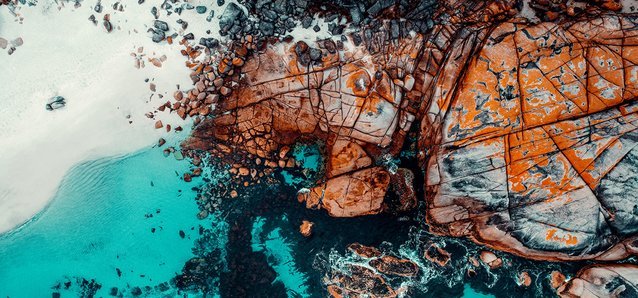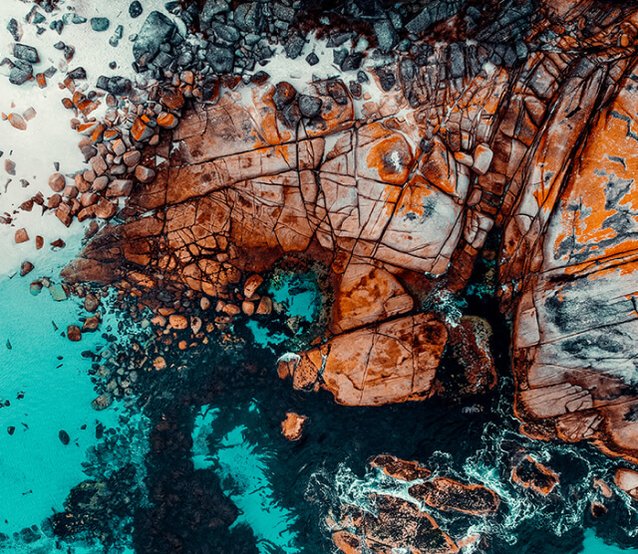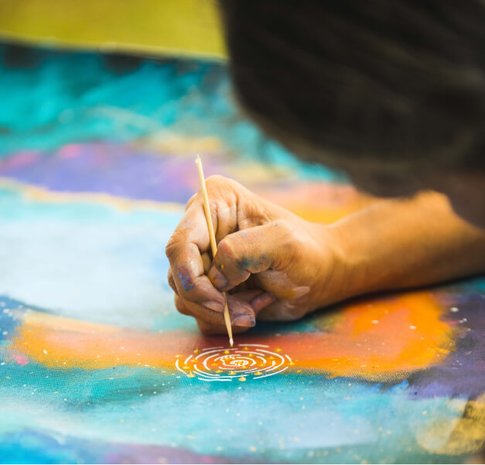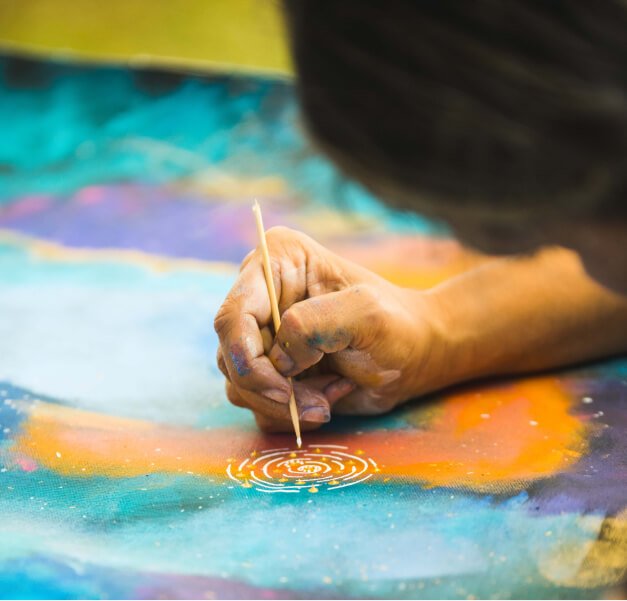Lorem ipsum dolor sit amet



Noongar Language
A Celebration of Language and Culture
At Danjoo Koorliny, we understand that language is a means of communication and a powerful vessel for preserving and sharing our cultural heritage. As we walk together toward 2029 and beyond.
Please note that Noongar, like all traditional Australian languages, is primarily oral, and words may have varied spellings. To ensure consistency, we have followed the spelling used by the South West Aboriginal Land and Sea Council under the Single Noongar Claim.
Noongar Word List
The Noongar words included are only a small part of the Noongar language.
See also the Noongar Dictionary by Rose Whitehurst.
The Noongar Dictionary copyright rights and interests belong to the Southwest Aboriginal Land and Sea Council.
Amangu
Noongar dialectical group
Baardanginy
Bounding, running (Along)
Baardanginy woort koorl
Running away
Babanginy/Barbanginy
Lightning
Balai
Lookout/Beware
Balak
Naked
Balang
Them, those
Balardong/Ballardong
Noongar dialectical group
Balga
Grass Tree
Balup
Them
Baranginy
Dig or Catch
Bardan
Spirit (a person’s spirit)
Bardee
Grubs (Found In Kooroop) Grass Tree
Barkininy
Bite, Biting
Barl
He, She
Barminy
Hit
Beerit
Daylight (Before dusk)
Benang
Tomorrow
Bibulmun/Piblemen
Noongar dialectical group
Bidee
Path
Bily
Naval
Bilya/Beeliar
River
Binjar/Pinjar
Swamp or a Lake
Binjareb/Pinjarup
Noongar dialectical group
Birak
Noongar season December and January as the ‘hot dry time’
Birdal
Sparks
Biri
Toe nails
Biriny
Resin (Kooroop) from Grass Tree
Birn
Cloak Pin for Booka (Skewer, Made From Bone)
Biyoo/Boyoo
Zamia palm
Bo
Long way
Bokitja
Going A Long Way
Boodee
Rat kangaroo – now rare
Boodja-Dooga
Dusty (Becoming)
Boodja/Booja
Country
Boodjak
Maggots
Boodjara
Country (Of Origin/Belonging to)
Boodjaree
Pregnant
Booka/Bwoka
Coats (Made From Kangaroo Skin)
Booladarlung
Pelican – large (bird)
Boolariny/Boola
Plenty, Many, Lots
Boolyaka
Leaving, Going
Boonitj
Knee
Boorda
Later on
Boordawon
Soon, Sooner than later
Boordiya/Boodier
Noongar Leader, Noongar Boss person
Boorn
Stick, tree, log, twig, wood
Boorna-Wangkiny
Message Stick
Boorniny
Cutting
Boort
Bark Of A Tree
Boya
Rocks, Stones
Boylyada maaman
Witchdoctor
Bulya/Boyly
Witchdoctor’s magic
Bulyits
Little “hairy” smelly people (from the other side)
Bunuru
Second Summer. Noongar season February and March, late Summer and early Autumn
Burdun
Light gidgee, highly prized for the elasticity of the timber
Choota
Bag (made from possum or kangaroo skin)
Dabakan Koorliny
Go Slowly, Walk Slowly
Dabakarn
Slow, slowly
Dalyaniny
Go, gone
Dangalang
Golden Waitsia (Everlastings)
Danjoo Koorliny
Walking Together
Dar Wara
Poor speaker, speak no good of something
Darbal
Estuary
Darboort
Dumb
Dardark
(A lime) White Clay – used to paint the body at festivals
Darliny
Tongue
Darmoorluk
Twenty-eight (green parrot) (bird)
Darp
Knife, Knives
Dartj
Meat
Dat-nyiny
Sitting there
Deman
Grandmother
Dembart
Grandfather
Derbarl Yerrigan
Swan River
Djarlgarro Beelier
Canning river
Djarlma
Forest
Djarraly
Jarrah
Djen/Djena
Foot/feet
Djenak
Evil Spirit
Djeran
Noongar season covers the cooler period of the months April and May
Djert
Birds (general term)
Djerung
Fat
Djilba
Noongar season August and September covers the late Winter and Early Spring
Djildjit
Fish
Djilgi
Freshwater prawn
Djilyaro
Bees
Djinang
Look
Djinanginy
Looking
Djinanginy Bo
Looking a long way
Djinanginy kaartdijin
Seeing and understanding
Djinda
Star
Djirip-djirip
Very happy
Djiripin
Happy
Djiti Djiti
Willy wagtail
Djooboorl djooboorl
Swim, swimming
Djooditj
Small kangaroo
Djook/Djookian
Sister/s
Djoop
Kidney
Djoorla
Bones
Dobitj
Dugite
Dooga
Dust
Dookerniny
Cooking
Doomboo
Womb
Doongkoorlanwornt
Fall down, fall over
Dowak
Throwing sticks
Durda-dyer/Dwerta-dyer
A skin of a dingo tail, worn on the upper part of the forehead as an ornament
Dwangk
Ears
Dwangkaboort
Deaf
Dwert/Dwerda
Dog (dingo)
Ga-ra-katta/Garra-Katta
Mt. Eliza at the foot of Kings Park
Gabbi Darbal
Estuary; place where salt and fresh waters mix
Ganeang
Noongar dialectical group
Gargangara
Armadale (area just north of the townsite)
Gidgee-borryl
Quartz edged spear – which in post-settlement times was glass tipped. It was up to ten feet long and about one inch in diameter and made from the mungurn (swamp wattle). This spear was made in the Ellensbrook and Wonnerup areas.
Gidgegannup
Place to make spears
Gidjie/Gidgee
Spear
Gil-git
Fish
Gnalla
Us/our
Gnargagin
Place of water
Goolamrup
Now known as Kelmscott
Gooljak/Kooljak
Swan
Goomalling
Place of possums
Goorda
Island
Goreng
Noongar dialectical group
Jirda
Birds (generic)
Kaartdijin
Knowledge
Kaartdijinboort
No knowledge (of something)
Kada Kada
Make believe
Kahno
Native potato
Kaleep
Camping grounds
Kali/Kylie
Boomerang
Kambarang
Noongar season with decreasing rain from October to November. Also known as Second Spring.
Kara
Spider
Karda
Goanna (as in lizard)
Kardup
Beneath, down, under
Karl/Kaarla
Fire
Karla Kurliny/Kala Koorliny
Going home
Karlawooliny
Hot
Karlup
Fire place/hearth; meaning home/heart country
Karnya
Shame, (or to have)
Kart-warra
Silly, stupid (kart – head) (warra – no good)
Kart/Kata
Head/Hill
Kaya/Kiya
Hello
Ke-ning/Ke-niny
Dance
Kedalak
Night time
Kedalup
Daytime
Keip/Kep/Keipa
Water (fresh)
Kenyak
That’s enough
Kenyak yeye
That’s enough for now
Kilee, Kylie
Boomerangs
Kinjarling
Rain
Kipilyong
Slippery
Kiya/kaya
Hello, hey
Koboorl
Stomach
Koboorlkorl
Full stomach, satisfied
Koboorlweert
Hungry
Koitj/kodja
Axe
Konk/Konkee
Uncle
Koolang/Kurrlong
Child
Koolangka/Koolanga/Kurrlongurr
Children
Koolee
Head lice
Koomba
Big
Koomoorl/Goormoorl/Goomal
Possum
Koomp
Urine
Koora/Kura/Koora-Koora
Long time ago, a very very long time ago
Koorlbardi
Magpie (bird)
Koorliny
Action word as in come, coming, going, walking
Koornt
A shelter (mia-mia)
Koort
Heart, hearts, two hearts together
Koorta
Husband or wife (two hearts coming together as in marriage)
Kulari
Lizard (rock)
Kwan
Backside
Kwardiny/Quardiny
Wild Carrot
Kweeyar/Kooyar/Kwooyar
Frog
Kwelak
Hip
Kwenda
Bandicoot
Kwilana
Dolphin
Kwoba/Kwop
Good
Kwobardak
Pretty, beautiful
Kwoliny
Wrist
Kwonding/Kwandong/Quandong
Wild peach
Kwop Wirrin/Quop Wirrin
Good spirit
Maam/Maaman
Man, men or father
Maar/Mar/Maara
Hand, Hands
Maart
Leg
Makuru
Noongar season which is the early Winter and occurs from June and July
Manga/Mungah
Fish traps
Manitj
Policeman
Manitjimat
White cockatoo
Marak
Finger
Marlee
Swan (bird)
Marngk
Tea
Marp
Skin
Mart
Leg
Meeandip
Garden Island (now known as)
Meeuk Mia
Halo of the Moon
Meeuk/Meeka
Moon
Meeukany
Moonlight
Meeyal
Eye/eyes
Meeyalboort
Blind
Mely
Lies
Meriny
Vegetables, any food
Mia mia
Shelter made from natural bush; sticks and branches
Minditj
Sick, unwell
Mineng
Noongar dialectical group
Miro
(The name of the south-west) Spear Thrower – used by Noongar to propel the aim of the gidjee
Mon
Heel
Moodjar
Christmas Tree (Tree which blossoms around Christmas with large orange flowers)
Mooly
Nose
Moolyip/Moorlyip/Moorlyan
Sulk, sulky, unhappy (or as in the saying “nose out of joint”)
Moolymaree
Face
Moordit
Hard, solid
Moordiup
Hurry, hurry up
Moorlin
Back
Moorn
Black
Moornawoolinj
Very very black
Moort bidi
Family track
Moort boodja
Family run
Moort/Moortung
Family or relations
Mootjool
Yellow everlasting flower
Mopoke
Owl
Motogon
Good ancestor
Mubarn Maaman
Law men, Law man
Mulgar/Marlga
Thunder
Mull
Green Berries
Mullers
Flat stones (used for grinding)
Mulyart
Nose bone
Mungart
Jam gum tree
Nanuk
Neck
Narik
Land ready for burning off
Narnak
Beard
Nartj
What
Ngalak
We, us
Ngalang
Our
Ngaly
Underarm
Ngamma/Ngamar
Rockholes (filled with water)
Ngangungudditj Walgu
The hairy faced snake (Rainbow Serpent)
Ngany
I, me
Ngarlak
Cheek
Ngarngk
Mother, sun
Ngarniny
Eat, Eating
Ngeern
Whose is that (person)
Ngooloor
Frightened (of)
Ngooloormayup
Carnac Island (now known as); Ngooloor-may-up (place to be frightened of)
Ngooltja
(Brother or Sister) in-Law
Ngoolyark
Black cockatoo (bird)
Ngoon/Ngoonee
Brother/Brothers
Ngoonyong
Sugar
Ngoornt
Chest
Ngoorp
Blood
Ngorlak
Teeth/Tooth
Ngow
Mallee hen (bird)
Ngow-er
A small tuft of feathers tied to a stick and worn in the hair for ornamentation
Nidja
Here
Niggara
Human hair girdle worn around the waist
Nih
Listen
Njunga
Noongar dialectical group
Noongar/Nyungah/Nyungar
Person or “the People”
Noonookurt
You – as in asking a person where are they ie: winjar noonookurt (where are you?)
Noorook
Egg
Noort
Fly also means Bad smell, smelly
Noorti/Noortawooliny
Smelly, stink,dirty, very very dirty,
Nortj/Gnoytj
Dead, deceased
Nulbarn
A rope-like girdle made from possum hair, wound around the waist to carry weapons
Nunich
Totem
Nyakinyaki
Noongar dialectical group
Nyarnyee
Baby kangaroo, commonly known as a “joey”
Nyingarn
Echidna
Nyitting
Cold times, creation time
Nyittiyung
White person
Nyornditj
To pity, feel sorry for someone or something
Ongerup
Place of male Kangaroo
Uart
None
Uliwa
Look out; beware
Up (appended to name)
Place of, or location
Waabiny
Play, Play Time
Wadjamup/Wedjamup/Wadjemup
Rottnest Island (now known as)
Wadjela, Wedjala
White person (slang)
Walinj
To cry or Crying
Walken
Rainbow
Walyallup
Fremantle
Wandjoo Wandjoo/Wandju Wandju
Welcome
Wangkininy/Wangkiny
Language, Speaking,Talking
Wanna
Digging stick (women’s)
Wardan
Ocean, sea
Wardan-noorn
Eel
Wardandi
Noongar dialectical group
Warlang
Healthy
Warlitj
Eagle
Warra Wirrin
Bad spirits, no good spirits
Waugal/Waakal/Woggle
Noongar Rainbow Serpent; from the Nyitting or Noongar Dreaming
Weerlo
Bird
Weitj
Emu
Whadjuk/Wajuk
Noongar dialectical group
Wilgee
Ochre (Red and Yellow)
Wilman
Noongar dialectical group
Winja/Winjee
Where? Where is it? Where are you?
Winnaitch
Taboo (sacred area)
Woomera
Wooden shield
Woorine
Yam
Wort/Woart
Throat
Wudjari
Noongar dialectical group
Yakiny
Stand, standing
Yakkan/Yakkinn/Ya-gyne
Turtle (freshwater)
Yandjet
Bulrushes
Yartj
Thigh
Yerdarap
Duck (bird)
Yet/Yat
Chin
Yeye/Yeyi
Now, the present, today
Yira
Up (as in upwards)
Yira Yarkiny
Be standing up or To “stand tall”
Yok
Young girl
Yonga
Kangaroo
Yongariny
Kangaroo hunting
Yoorn
Goanna (bobtail)
Yorga
Woman, women
Yued/Yuat
Noongar dialectical group
Yurenburt
Berries
Lorem ipsum dolor sit amet

Professor Anne Poelina
Nulungu Institute Research University of Notre Dame
Professor Anne Poelina PhD, PhD, MEd, MPH&TM, MA, Nyikina Warawa Guardian Martuwarra Fitzroy River, Co-Chair of Indigenous Studies University Notre Dame, active community leader, human and earth rights advocate, and Peter Cullen Fellow. Laureate Women’s World Summit Foundation (Geneva, 2017) elected Chair of the Martuwarra Fitzroy River Council (2018).

Samantha Murray
A Yilka/Wongutha/Nyoongar/Yamatji woman who grew up in Cosmo Newberry ( where she has traditional owner links) and Laverton and has connections to the broader Central Desert Area.
Her Indigenous name is Imelia and Skin name Panaga.
She has previously been a Director of Yilka Aboriginal Corporation for over 3 years and is a currently a Director of Yilka Heritage and Land Care which deals with the land management programs and ranger team. Sam has worked in a range of other government-based roles in education, public housing and TAFE.
She has previously worked with Central Desert Native Title Services and Desert Support Services.
Samantha currently works as Deputy CEO – at the Indigenous Desert Alliance where she continues with her passionate commitment to supporting people and country of the Australian desert.

Michelle Andrews
An executive leader and environmental scientist with 30 years’ experience in the public sector currently in the role of Director General, Department of Water and Environmental Regulation.
Michelle has previously led the role of Director General for the Department of Communities and reformed the organisation’s governance and integrity systems following a major fraud and corruption incident.
Michelle has held executive roles within the Department of Premier and Cabinet, State Development and the former Department of Mines and Petroleum, where she focused on major projects, resource development policy and strengthening relationships across government, industry and the community.
She strongly supports taking action on Aboriginal outcomes and formed the Cultural Council at Communities to ensure appropriate guidance on these actions. At the Department of Water and Environmental Protection, Michelle is driving better engagement outcomes for Aboriginal and Indigenous people with her support for the department’s Reconciliation Action Plan and the Aboriginal Engagement Strategy.
As a senior executive, Michelle believes in the power of collective leadership and the development of individual leaders to create shared leadership capabilities within organisations.
When she has personal time out, Michelle is a keen walker and likes nothing better than pulling on a backpack and hiking trails in our great state.

Glen Kelly OAM
Glen is an Aboriginal man of the Wardandi Nyungar people of the South West of Western Australia. Glen is an Environmental Scientist and has almost 30 years of experience in Aboriginal affairs, native title, Aboriginal land management and community development at local, national and international levels.
Glen served as the Chief Executive Officer of the South West Aboriginal Land and Sea Council (SWALSC), the native title representative body for the South West of WA, for nearly a decade. Glen has also worked across Australia on native title agreement making and has assisted a variety of Traditional Owner groups and Government clients achieve strong and sustainable native title outcomes.
From 2015 to 2017 Glen also served as the Chief Executive of the National Native Title Council where he worked alongside members of the native title sector, Government and Industry to secure reforms to the Native Title Act. In 2019, Glen was awarded West Australian of the Year in the Indigenous category and was appointed as a Member of the National Native Title Tribunal in October 2020.
Lorem ipsum dolor sit amet

Professor Steven D. Hopper AC
Professor of Biodiversity, The University of Western Australia, Albany WA
Born in Bangalow NSW in 1951, and moving to Perth in 1965, today I am a field biologist, avid bibliophile, beach comber, photographer, part-time musician and family man. Previously, following PhD studies, I have worked in conservation research and management in the Western Australian Government (1977-1992), and been chief executive (Director) of two world-class botanic gardens (Kings Park WA 1992-2004, and Royal Botanic Gardens Kew, UK 2006-2012). I now work in a 0.6FTE appointment as Professor of Biodiversity at The University of Western Australia, Albany (2012 to present) and as a strategic consultant.
My research and teaching interests include specialist expertise in natural history, eucalypts, kangaroo paws, orchids, plants of granite outcrops, endangered plants, cross-cultural biodiversity research with Noongar Aboriginal people, old climatically-buffered infertile landscapes (Ocbils), pollination of plants by birds and mammals, and botanic garden management. I am an author of 338 scientific publications, 155 peer-reviewed, with 139 sole-authored, and 14 books and monographs. My field research has extended across Australia and New Zealand (since 1972), the USA (since 1990), South Africa (since 1997), and the UK and western Europe (since 2001).
I joined as Director the Royal Botanic Gardens Kew in London, a World Heritage tourist site and global plant science powerhouse of 800 staff, in 2006, and led the organization through celebrations of its 250th anniversary in 2009, before returning to UWA in 2012. As a CEO, Chief Scientist and manager, I have seen Kings Park and Botanic Garden and the Royal Botanic Gardens, Kew through substantial organizational change, without industrial disputation, in challenging economic circumstances, delivering much improved revenues and world-class improvements to services, facilities and science outputs in both cases.
Currently, I am focused on helping devise ways for people to live sustainably with biodiversity, especially on Ocbils, and in collaboration with Noongar people, postgraduate students and other scientists worldwide.
In 2012 I was inducted into the Western Australian Science Hall of Fame. I was also awarded Australia’s highest civilian honour of Companion of the Order of Australia (AC), for ’eminent service as a global science leader in the field of plant conservation biology, particularly in the delivery of world class research programs contributing to the conservation of endangered species and ecosystems’.

Lindsey Langford
Chief Executive Officer of the Indigenous Desert Alliance (IDA)
Lindsey is passionate about seeing positive and Indigenous directed outcomes for the desert and its people. He grew up in Central Australia and has had privilege of an intimate and lifelong association with Indigenous desert land managers on their country.
He has spent the past 15 years working primarily with Indigenous desert rangers to support the operational and strategic development of Indigenous Protected Area programs and ranger teams through to founding and developing the Indigenous Desert Alliance.